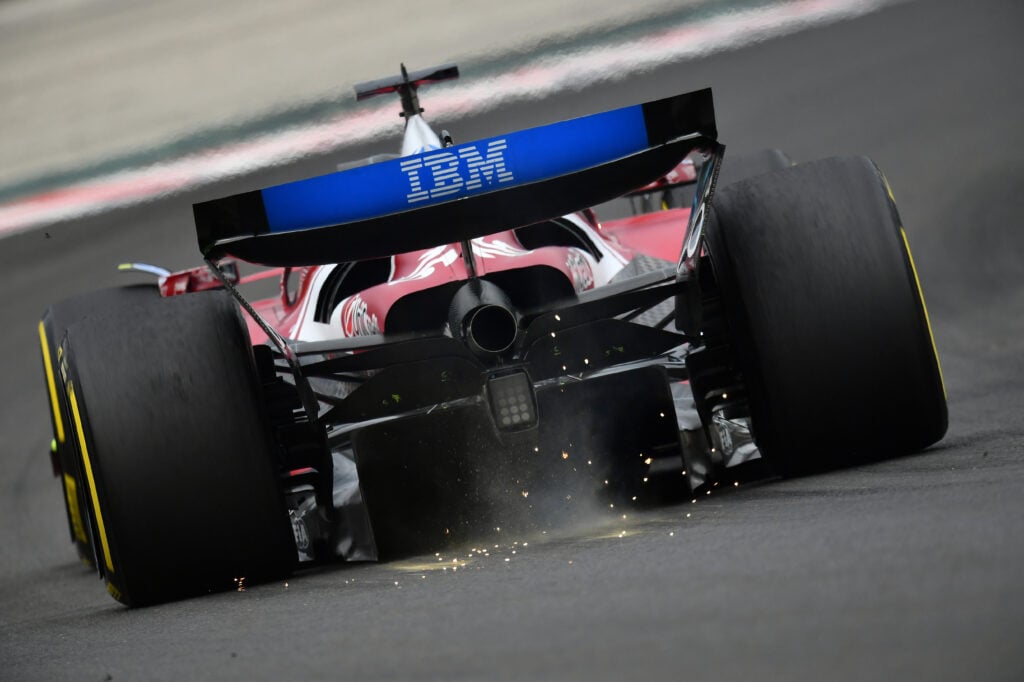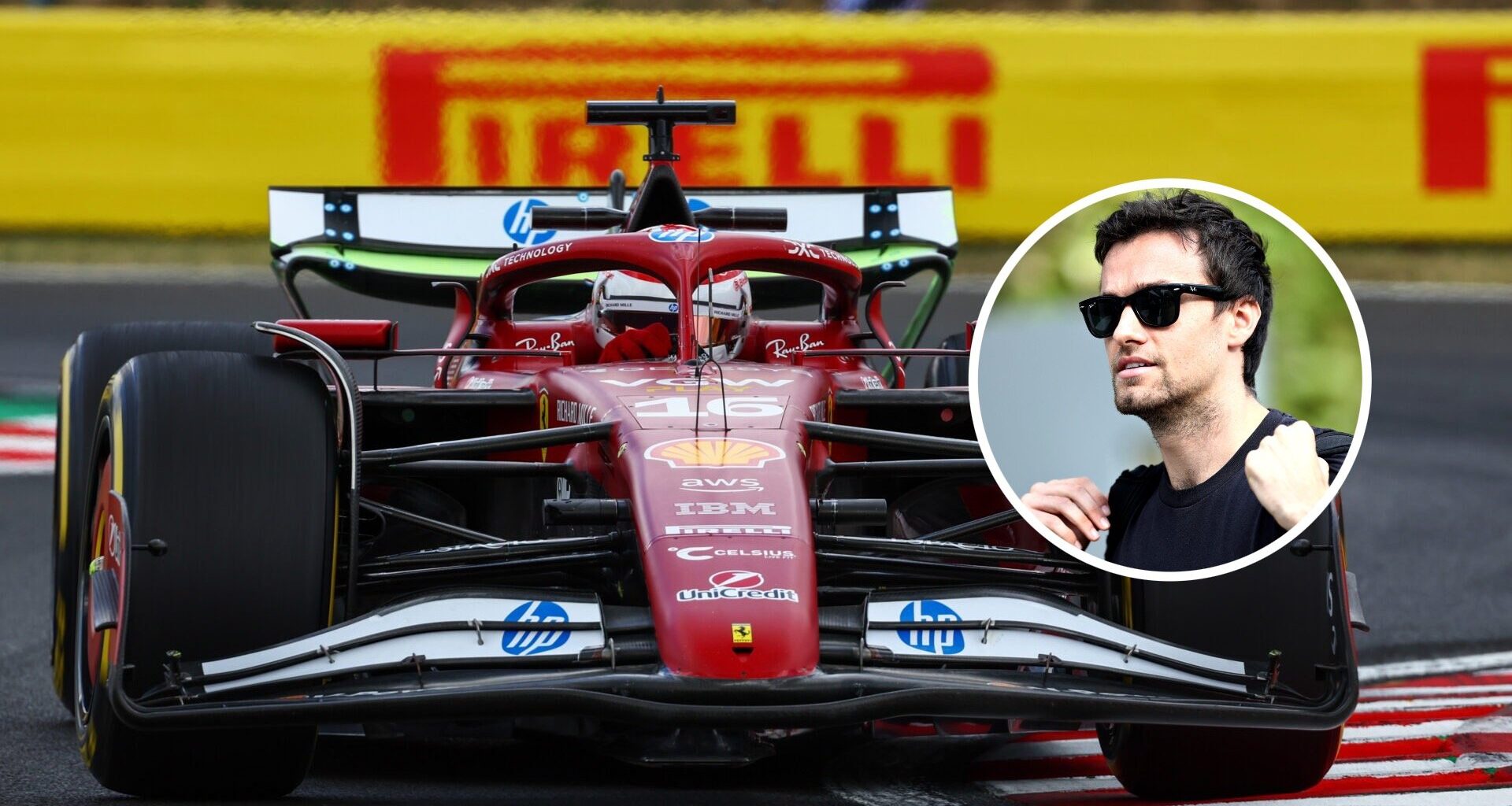Charles Leclerc suffered a dramatic drop-off in performance during the Hungarian Grand Prix, despite leading for most of the 70-lap race.
The Ferrari driver took a shock pole on the Saturday, beating McLaren’s Oscar Piastri by 0.026s. A bemused Leclerc didn’t have an explanation for the pole, but it appeared the change in track conditions suited them towards the end of the session.
In the race it looked like Ferrari had the speed to hold off Piastri, and while Leclerc did so for 40 laps of the Hungaroring, his pace would drop off dramatically in the final stint.
Leclerc voiced his frustration over team radio and told them his car became “undrivable,” prompting speculation over what Ferrari was trying to manage. The Monegasque dropped out of podium contention when he was overtaken by George Russell, and would later claim Ferrari was managing an issue with his chassis.
Analysing what happened to Leclerc on F1 TV, former driver Jolyon Palmer uncovered one key piece of data that might explain Leclerc’s drop-off in performance.
 Photo by James Sutton – Formula 1/Formula 1 via Getty ImagesJolyon Palmer uncovers key data that explains Charles Leclerc’s Hungarian GP decline
Photo by James Sutton – Formula 1/Formula 1 via Getty ImagesJolyon Palmer uncovers key data that explains Charles Leclerc’s Hungarian GP decline
Leclerc’s lap times dropped by nearly three seconds per-lap compared to the leaders, showing the team was clearly managing some sort of issue in his car.
Palmer notes two key points on the track where Leclerc was losing the most time, having effectively started to lift and coast.
“Leclerc has no more acceleration towards the end of the straight. He’s not even picking eighth gear here, and it’s the same up towards Turn 4. After having a really quick car on the straights in qualifying, suddenly he does not have (battery) deployment,” said Palmer.
“Charles is fighting the rear of the car. It could be that Ferrari cranked on a load of front wing, but they don’t believe they did. So then it could be that he picked up damage at this part of the race, and that’s why he’s missing a load of downforce. But I do believe it may well be the tyre pressures.”
Jolyon Palmer agrees with George Russell theory on Charles Leclerc
Russell suspected that Ferrari reduced the tyre pressures in Leclerc’s car at the end of the race in a bid to reduce plank wear. Palmer believes this is the most logical explanation, given the limited number of things you can change on the car during a pit stop.
“The only thing you can change in a pit stop is the front wing angle or tyre pressures. Normally, you’d never change the tyre pressures to run them as low as possible, because they deflate and you have more of the tyre in contact with the asphalt and more grip,” said Palmer.
“Pirelli mandates that you have to run to a minimum tyre pressure, which you can’t run lower than for safety. No one would go higher because you’d lose grip, but if you did, you’d also raise the ride height of the car. This is what that data looks like. I can see why Mercedes picked up on it, there is probably a bit of damage, but I can see the logic.”
Ferrari have held concerns over plank wear in their cars since their double disqualification at the Chinese Grand Prix. F1 technical expert Gary Anderson disagrees with Russell’s theory, believing that Ferrari were nursing damage to the chassis rather than taking a risk in the race.
However, Leclerc’s angry radio messages would suggest that Ferrari made a change in race that impacted his car, after he specifically referred to managing a chassis problem rather than any specific damage.

